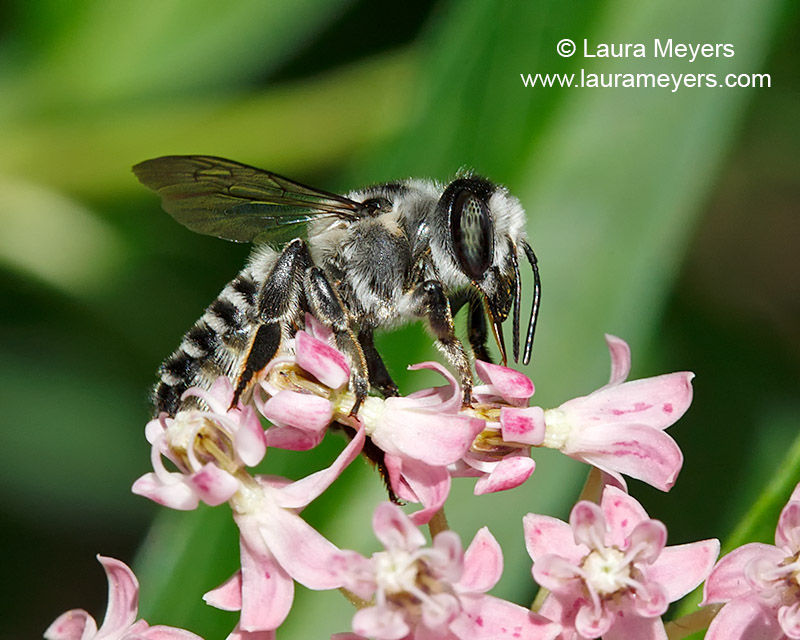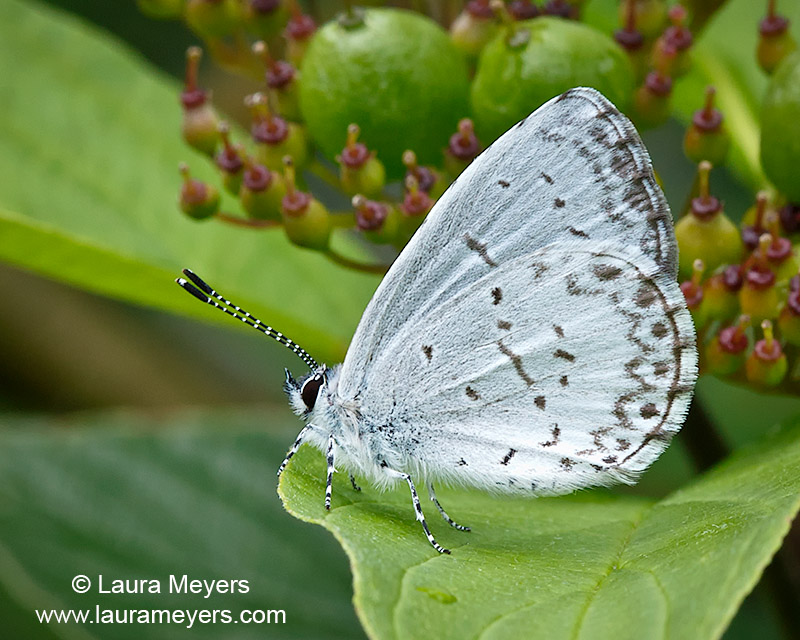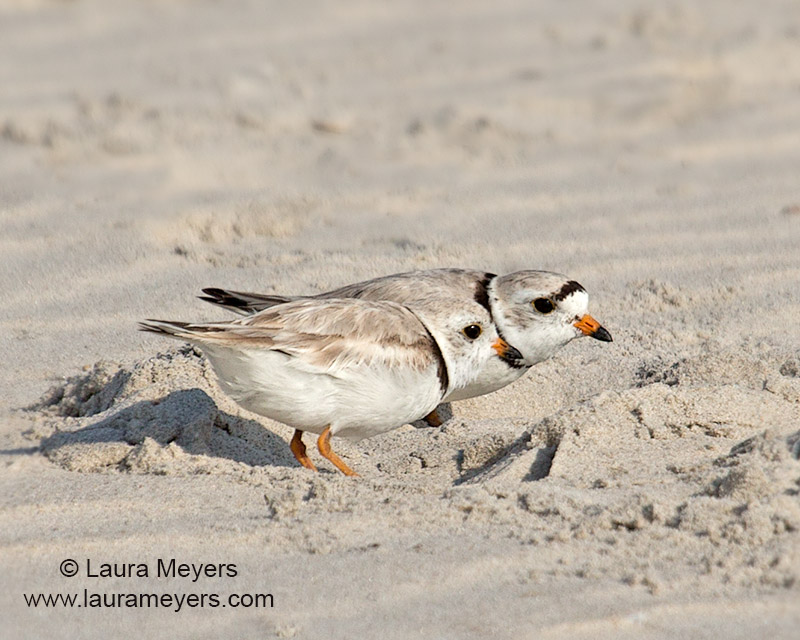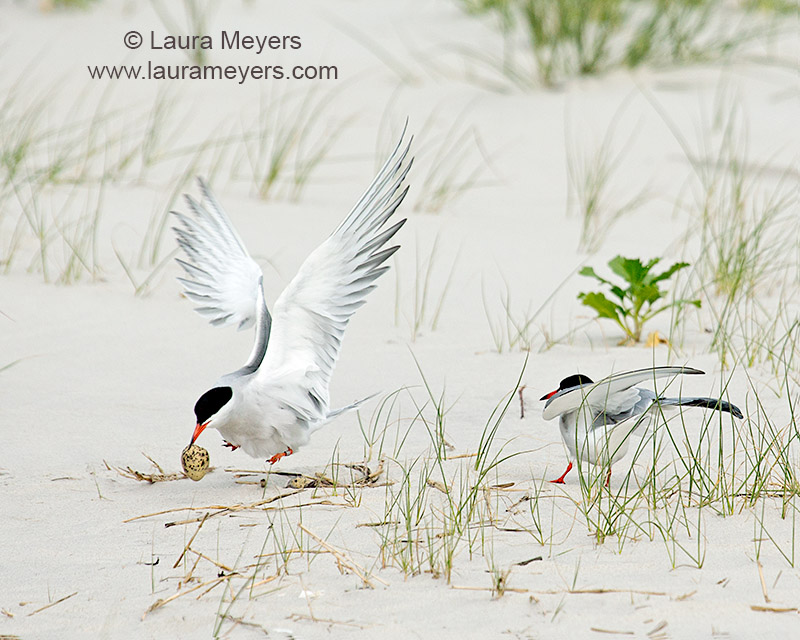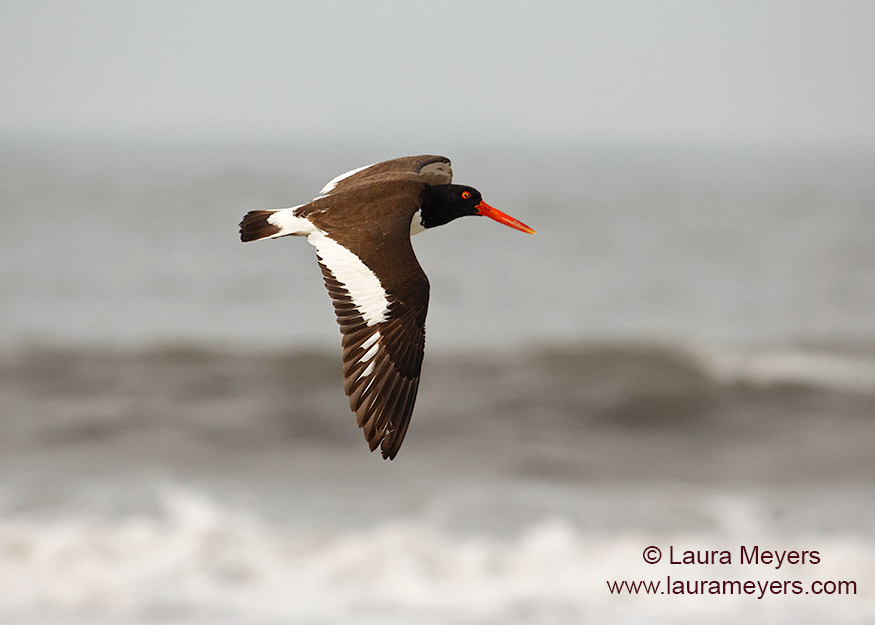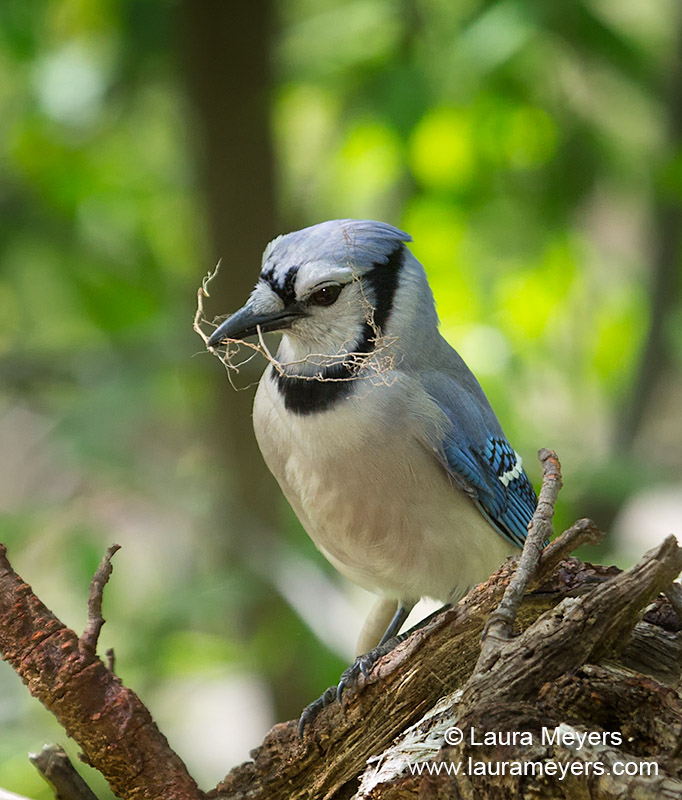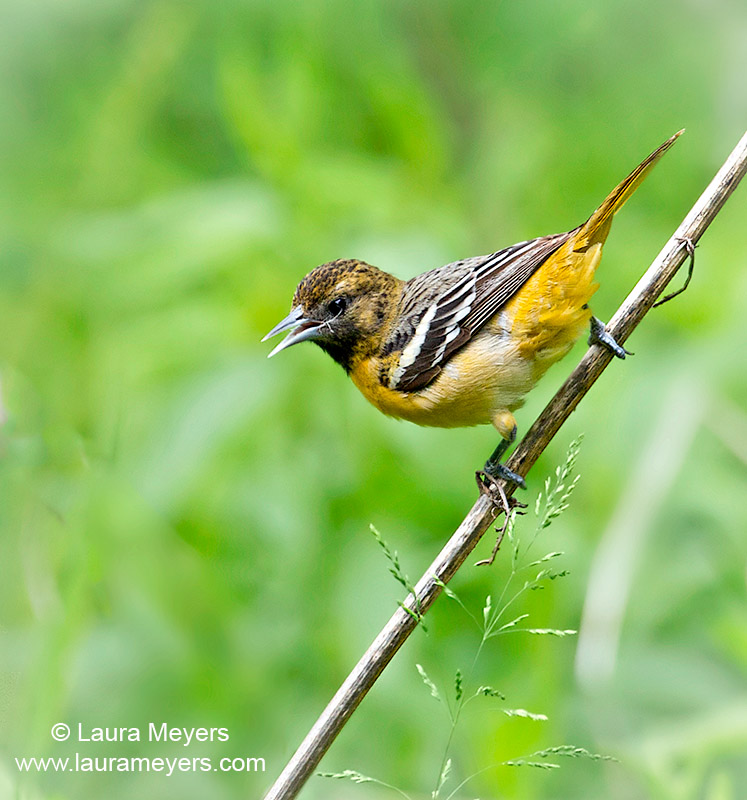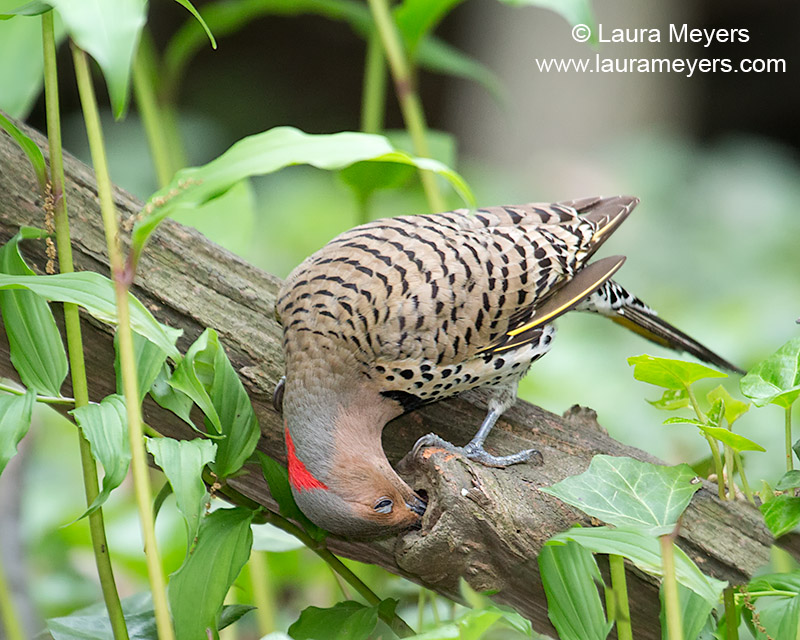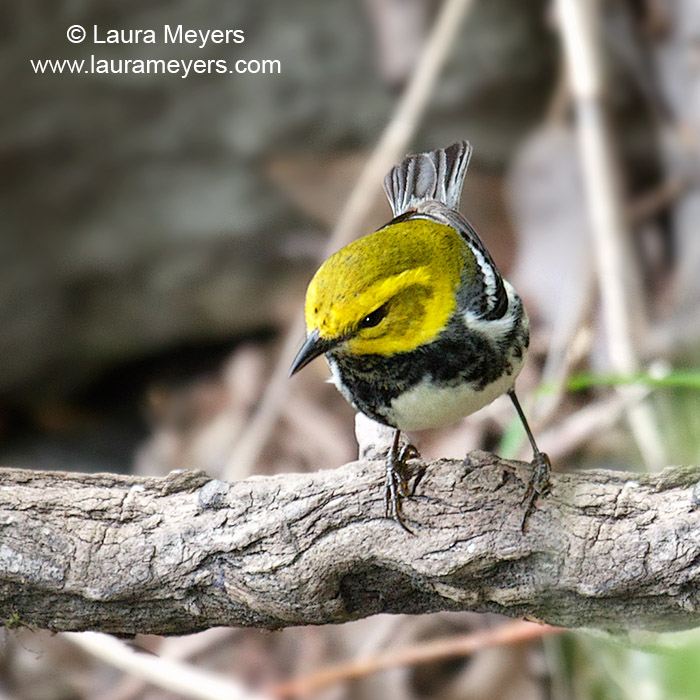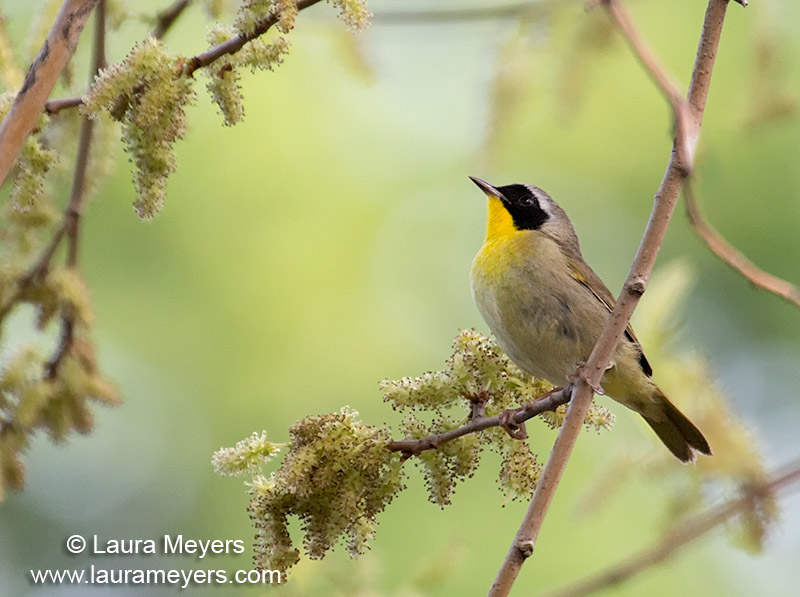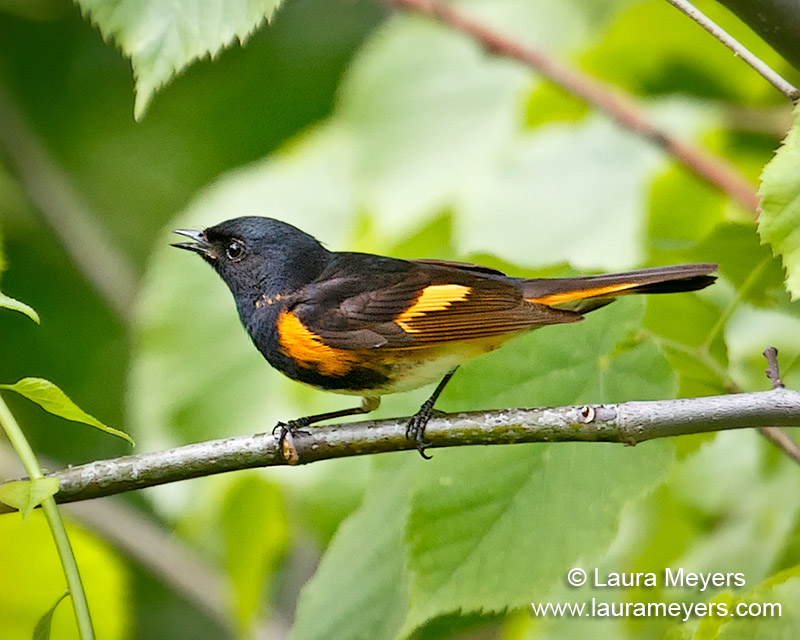Leaf-cutter Bee
The picture of this Leaf-cutter Bee was taken with the Canon 100mm macro lens on the Canon 5D Mark III camera.
The leaf-cutter bee (family Megachilidae), differ from most other bees in that they collect pollen on their abdomens rather than on their hind legs.
Author Archives: Laura Meyers
Summer Azure Butterfly
Piping Plovers
Piping Plovers
The Piping Plover is a threatened and endangered shorebird. Critical nesting habitats are now being protected to help the population during its breeding season. Populations have seen significant increases since the protection programs began, but the species remains in serious danger.
To hear the sounds for the Piping Plover, click on the arrow below.
Common Tern
- Common Tern
Common Terns with Egg
A story unfolded as I photographed this pair of Common Terns on the beach. The male flew in with a large fish and the female was not in the least bit interested. He finally ate it himself. After about five minutes, the female got up from the nest, poked her head into the nest and flew off with this broken egg. She flew high into the air and dropped the egg onto the sand in a similar manner to that of a gull dropping a clam shell. Since I captured this whole incident on camera, I could also see the contents of the egg falling out of the broken shell. There were very few Common Tern nests at Nickerson Beach compared to previous years which makes me wonder if Hurricane Sandy created a problem for these nesting birds.
American Oystercatcher in Flight
American Oystercatcher in Flight
True to its name, the American Oystercatcher is specialized in feeding on bivalves (oysters, clams, and mussels) and uses its brightly colored bill to get at them. These conspicuous birds tend to roost on beaches, dunes, or marsh islands near their foraging sites, and rarely venture far inland. The picture of this lovely American Oystercatcher in flight was taken at Nickerson Beach on Long Island.
To hear the call of the American Oystercatcher, click the arrow below
Common Yellowthroat Warbler Male
Common Yellowthroat Warbler Male
The picture of this pretty male Common Yellowthroat Warbler was taken in the Ramble in Central Park during spring migration. The breeding habitats of Common Yellowthroat Warblers are marshes and other wet areas with dense low vegetation, and may also be found in other areas with dense shrub. However, these birds are less common in dry areas. Females appear to prefer males with larger masks. Common Yellowthroats nest in low areas of the vegetation, laying 3–5 eggs in a cup-shaped nest. Both parents feed the young.
To hear the song of the Common Yellowthroat Warbler click the arrow below
Blue Jay
Blue Jay with Nesting Materials
Both members of the Blue Jay pair gather material and incorporate into nest, but males appear to do more of the former, and females more of the latter. The outer shell is composed primarily of strong, fresh twigs, sometimes thorny species, but also may include dead twigs. Twigs used in outer shell of the nest is usually taken from live trees, often with great struggle. Size of twigs decreases toward nest cup. The cup usually is lined with tough rootlets; sometimes lined with wet, partially decomposed leaves and mud is often incorporated in nest
I took this picture in the ramble in the Central Park Ramble
Mourning Doves Billing
Mourning Doves Billing and Cooing
Allopreening, a form of appeasement behavior, occurs between mates during pair formation and consists of gentle nibbling of feathers in head and neck regions with beak.. Billing usually begins with male offering open beak to female after brief bouts of allopreening and displacement preening.The picture of this lovey doves was taken in the ramble in Central Park.
Veery
Veery
The picture of this Veery on a tree stump was taken in the ramble in Central Park during Spring migration. I rarely do get to photograph this bird as they are very secretive and seem to always be in the shadows as this particular bird was. Luckily I was able to capture a moment and the photo this time.
Baltimore Oriole
Baltimore Oriole Juvenile
Young male Baltimore Orioles do not molt into bright-orange adult plumage until the fall of their second year. Still, a few first-year males in drab, female-like plumage succeed in attracting a mate and raising young. The picture of this young male Baltimore Oriole was taken in the Ramble in Central Park.
Click arrow below to hear the typical song of the Baltimore Oriole
Northern Flicker
Northern Flicker Female Foraging
Although it can climb up the trunks of trees and hammer on wood like other woodpeckers, the Northern Flicker prefers to find food on the ground. Ants are its main food, and the flicker digs in the dirt to find them. It uses its long barbed tongue to lap up the ants.
Click the arrow below to hear the sounds for the Northern Flicker
Wilson’s Warbler
Black-throated Green Warbler
- Black-throated Green Warbler
Black-throated Green Warbler
The male Black-throated Green Warbler sings persistently during the breeding season. One individual Black-throated Green Warbler was observed singing 466 songs in one hour.The male Black-throated Green Warbler tends to sing his “zee-zee-zee-zoo-zee” song near the middle of his territory, largely in the beginning of the breeding season to attract females. He sings the “zoo-zee-zoo-zoo-zee” song mostly around the territory’s margins, to deter other males.
Click the arrow below to hear the song of the Black-throated Green Warbler
Common Yellowthoat Male
Common Yellowthroat Male
The Common Yellowthroat was one of the first bird species to be catalogued from the New World, when a specimen from Maryland was described by Linnaeus in 1766. Carl Linnaeus is often called the Father of Taxonomy. His system for naming, ranking, and classifying organisms is still in wide use today (with many changes). His ideas on classification have influenced generations of biologists during and after his own lifetime
Click on arrow below to hear the song of the Common Yellowthroat
